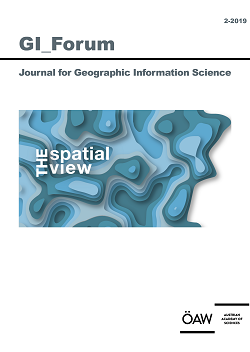Adrijana Car – Thomas Jekel – Josef Strobl – Gerald Griesebner (Eds.)
GI_Forum 2019, Volume 7, Issue 2
Journal for Geographic Information Science
Abbas Rajabirad,
Jihye Shin,
Behnam Atazadeh,
Mohsen Kalantari
S. 81 - 97
doi:
10.1553/giscience2019_02_s81
Verlag der Österreichischen Akademie der Wissenschaften
doi:
10.1553/giscience2019_02_s81
Abstract:
Over recent years, unprecedented urbanization has fostered the rapid development of multi-storey buildings and infrastructure facilities, resulting in spatial and functional complexities in cities. Land and property information plays a vital role in a wide range of applications in land administration in rapidly growing cities. However, the current fragmented practice relying on 2D representation does not provide a reliable and accurate legal description of underground and aboveground properties as a foundation for evidence-based decisions in support of economic prosperity, human activities and public safety in urban areas. We propose a conceptual framework for 3D digital management of urban land and property information. The framework provides a foundation to federate various 3D models, validate their integrity, and analyse them for land administration. Using a case study of a multi-owned building located in the state of Victoria, Australia, this paper explores the practicality of the framework to support decision-making in building subdivision.
land and property information, map base, 3D SDI, 3D digital data, 3D data validation
Published Online:
2019/12/11 13:54:49
Object Identifier:
0xc1aa5576 0x003b176d
Rights:https://creativecommons.org/licenses/by-nd/4.0/
GI_Forum publishes high quality original research across the transdisciplinary field of Geographic Information Science (GIScience). The journal provides a platform for dialogue among GI-Scientists and educators, technologists and critical thinkers in an ongoing effort to advance the field and ultimately contribute to the creation of an informed GISociety. Submissions concentrate on innovation in education, science, methodology and technologies in the spatial domain and their role towards a more just, ethical and sustainable science and society. GI_Forum implements the policy of open access publication after a double-blind peer review process through a highly international team of seasoned scientists for quality assurance. Special emphasis is put on actively supporting young scientists through formative reviews of their submissions. Only English language contributions are published.
Starting 2016, GI_Forum publishes two issues a Year.
Joumal Information is available at: GI-Forum
GI_Forum is listed on the Directory of Open Access Journals (DOAJ)




 Home
Home Print
Print
 References
References
 Share
Share
